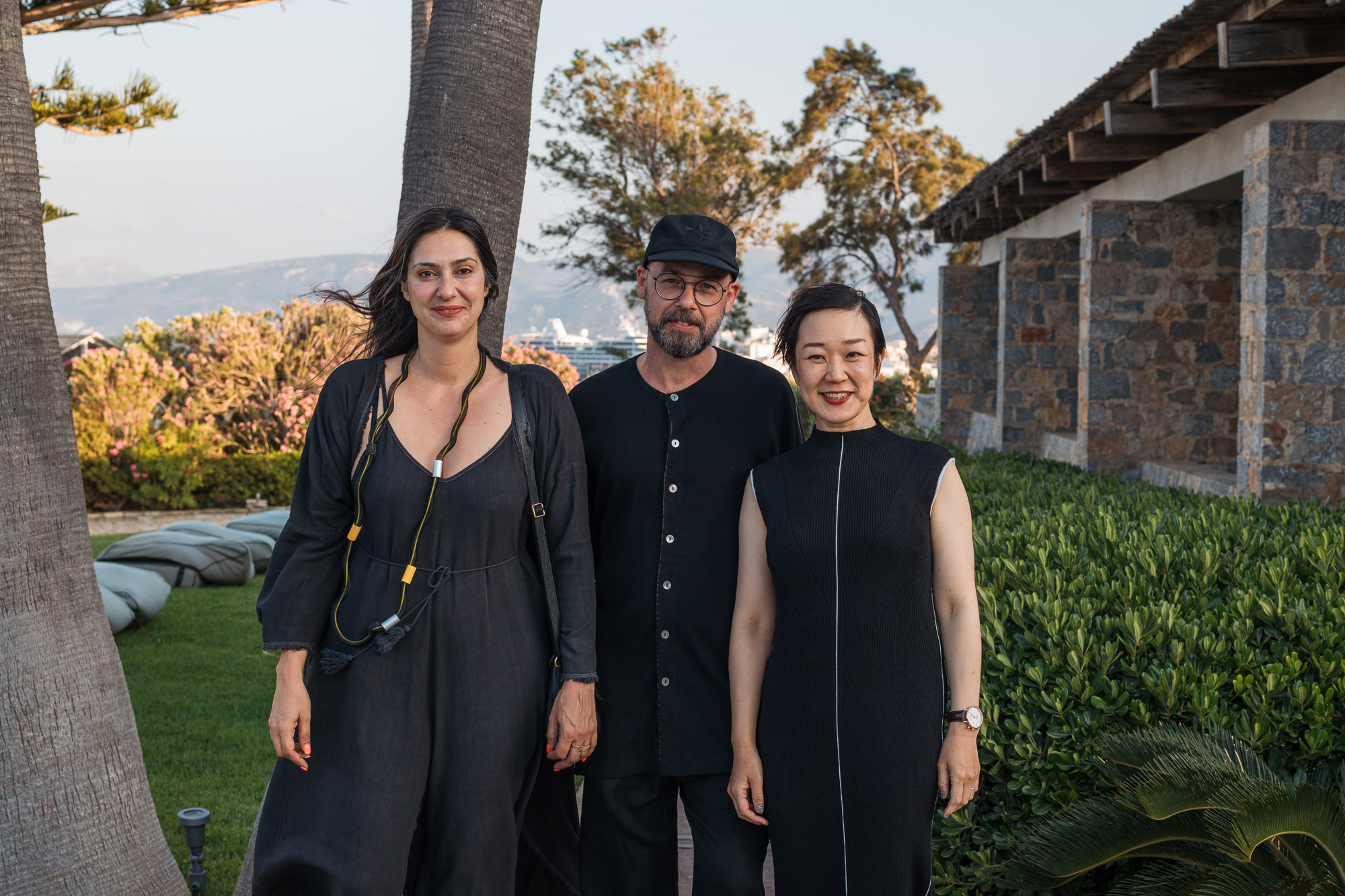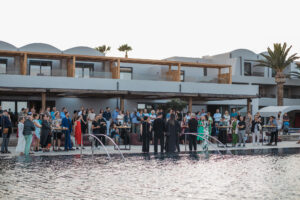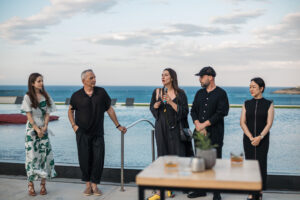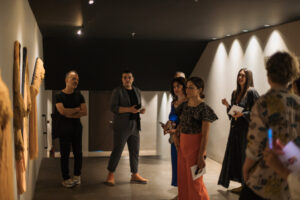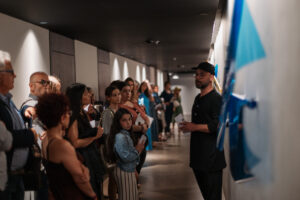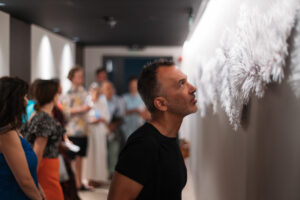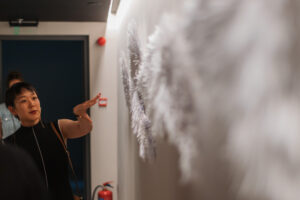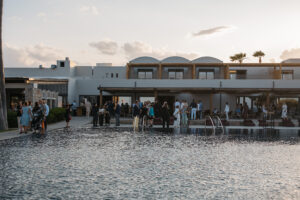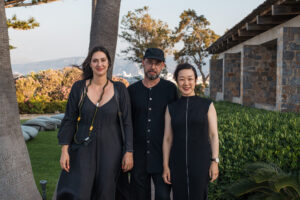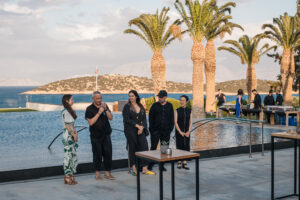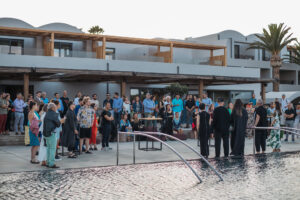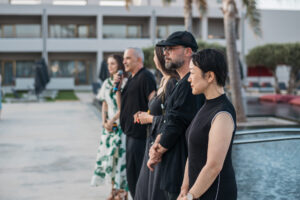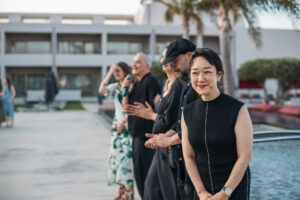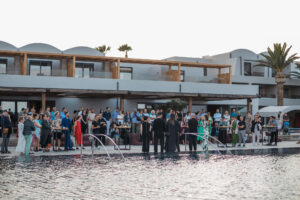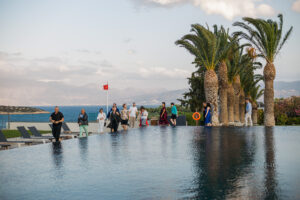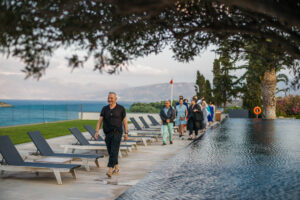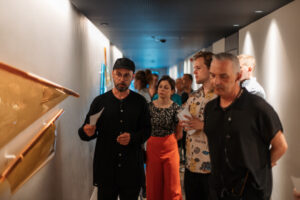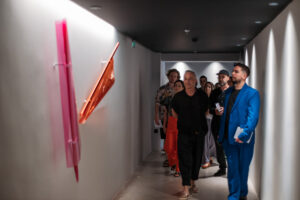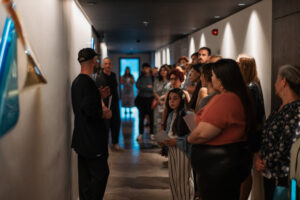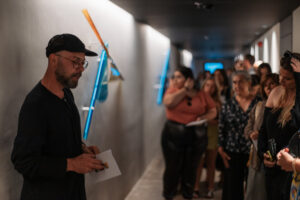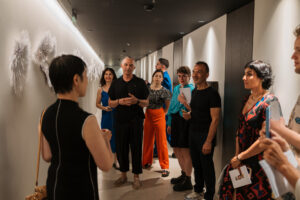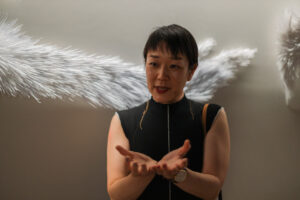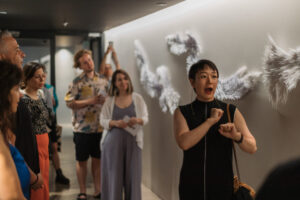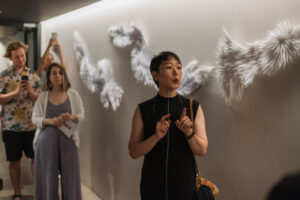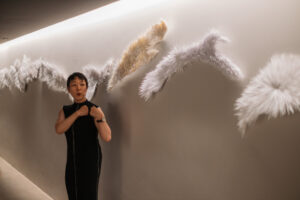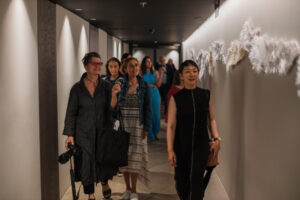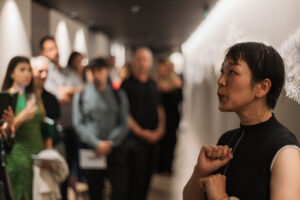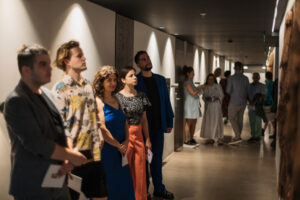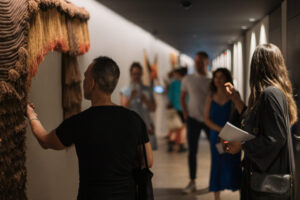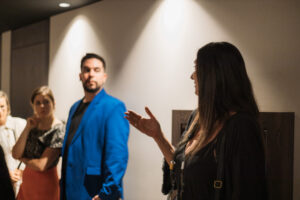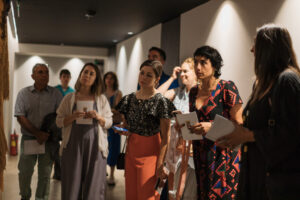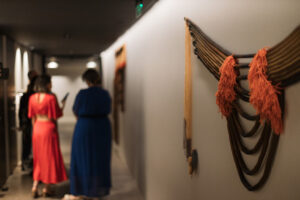First presentation of the 2023 G. & A. Mamidakis Foundation Art Prize winning works, Nomadic Murals by Maro Fasouli, Day by Alexandros Laios, and Whispers travel and whisper to you again by Ami Yamasaki.
On Saturday, June 17, 2023, at Minos Palace hotel & suites, in Agios Nikolaos, Crete, the G. & A. Mamidakis Foundation presented the three selected artists of its 2023 Art Prize. Nomadic Murals by Maros Fasoulis, Day by Alexandros Laios, and Whispers travel and whisper to you again by Ami Yamasaki.
Since its establishment in 2019, the G. & A. Mamidakis Foundation Art Prize has been supporting and promoting contemporary artists by offering them the opportunity to create a new, site-specific artwork which will remain on permanent display in Crete, will become part of the Foundation’s art collection,
and will join an important cultural heritage. Now in its third year, the Art Prize is a culmination of the Foundation’s thirty-year long efforts to strengthen contemporary artistic leadership and innovation.
This year, the Prize introduced two changes: firstly, it was open to international artists. Secondly, instead of one, the Selection Committee awarded three equal prizes to the three proposals which stood out for their originality, creativity, site-specificity, and connection with the theme of Care/Eudaimonia.
This year, the Prize called for site-specific, large-scale works created to be part of a specific, configured environment; works which narrate an internal path/route, and which can be reference points/landmarks within their exhibition space. Emphasis was also placed on the theme of Care/Eudaimonia, which was
the theme of the recently inaugurated G. & A. Mamidakis Foundation Research Residency Programme (October 2022).
Nomadic Murals, Maro Fasouli
Fasouli’s overall oeuvre concerns architecture and building structures, weaving and tradition, folklore, and storytelling. Places, techniques, and styles have always coexisted in her work, yet what most clearly defines her practice is the deconstruction and redefinition of tradition. Her ‘murals’ purposefully seem unfinished, as she has set forth to overturn one by one the rules of traditional weaving. She ignores perfect symmetry, preparatory sketches, and ‘self-punishing’ methods that do not allow room for mistakes, exploring beyond the strict and suffocating boundaries of traditional practices. Her very personal vocabulary includes a bold colour palette, asymmetries, and freedom of movement.
Nomadic Murals is the largest textile composition the artist has created to date, proposing an unusual horizontal narrative, using the distinct layout of the corridor to her advantage. Fasouli tells a complete story with a beginning, a middle, and an end. Referencing traditional Cretan weaving, and by extension gender values as well, a subject to which she returns often, Fasouli creates a work intertwined with the notions of protection, warmth, and care. The art of weaving, inextricably linked to women, has always been a caring practice, with the textile often taking on the role of a protective wall. Fasouli has created a fifty-meter-long monumental textile composition of interdependent parts that together weave an open system of interpretations which is constantly regenerated, much like tradition itself.
Day, Alexandros Laios
From the twilight blue of dawn to the deep sunset red, from the first morning light to the last colour detectable by the human eye, from sunrise to sunset, twenty different filters, each wrapped and placed diagonally at different heights, capture the tireless, daily struggle between darkness and light. The workcaptures successive colourings from different stages of the day, rendering the corridor into a huge kaleidoscope, where lights and shadows deliver fleeting moments and memories of the day just passed, in an installation activated solely by light.
Laios commences with the twilight blue, i.e., the first morning light, which he juxtaposes with a slightly brighter one, then he continues with the warmer lights of midday, and finally he concludes with the sunset colours, ending with red, the ‘last thing we perceive, the last color at the spectral end of human vision.’ The work alters and defines our perception of space and time. While crossing the corridor, the visitor also traverses his personal time, imbuing the passage of time with new meaning.
Day relates to the concept of well-being understood here as the experiential relationship of balance with our natural environment, and indeed in its primary essence, that of life-giving light. The practical manifestation of our concern and interest towards nature are reformulated as the need to open our eyes to the light of the world and to share this experience with others around us. A world without light is a world without care, and vice versa.
Whispers travel and whisper to you again, Ami Yamasaki
Yamasaki’s sculptural installations are part of a long ongoing research process spanning the last fifteen years exploring the threads that connect people to their environment and, by extension, to the universe. She familiarizes herself with a new space by listening intently and using a personal vocal technique – similar to the echolocation technique used by various animals – to locate objects using reflected sound. Therefore, with the use of ‘acoustic shadows’, the artist captures the unique sound identity of each space, which she then ‘translates’ into a sculptural installation.
Each section of the installation consists of several ‘wings’, made from thousands of thin strips of paper glued one by one – the result of a physically demanding process requiring days. Observing the wings closely, one is immediately captured by the whispers of the stories each one tells. These flowing soundscapes, that translate the acoustics of the space, but also of the surrounding area, namely Agios Nikolaos, prompt us to imagine the places where these sounds were born and the routes they have already travelled.
These imperceptible sounds connect today’s audience with the natural surroundings, highlighting, in this way, another dimension of care, the care for the lived place, the place of residence. Nostalgia for a place is often nostalgia for its colours, smells, and sounds. The intended relationship and care for the environment is always based on the love for those dim qualities that constitute it an object of care. Care and the environment, care and the community, both in the sense of shared spaces and collective thought and action, appear to be highly intertwined in this redefinition of this notion.
Curated by: Sotirios Bahtsetzis, Yota Dimitriou
Place: Minos Palace hotel & suites
Opening: 17.06 | Permanent exhibition
Participating Artists: Maro Fasouli, Alexandros Laios, Ami Yamasaki

